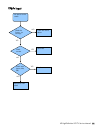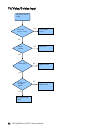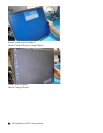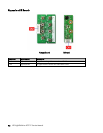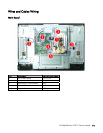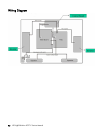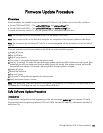94 HP High Definition LCD TV Service Manual
Software Feature Requirement
1 safe-kernel.img1 reads images with different names, as follows:
a. update _LCD720.tgz
b. update_LCD1080.tgz
2 safe_kerenl.img1 uncompresses update_xxx.tgz, and then reads product IDs from it. Product IDs are as follows:
a. LCD720: all 720P LCD TVs
b. LCD 1080: all 1080P LCD TVs
3 Assume all TV boards are loaded and initially tested by the ODM and product IDs are embedded into a flash
memory block.
Software Update Procedure
1 Load Safe Kernel from a USB drive key.
2 Run Safe Kernel. When you run Safe kernel, it reads update_XXX.tgz, uncompresses it, and extracts the Product ID of
the software image file: update_xxx.tgz.
3 During the software upgrade process, Safe Kernel extracts the Product ID from the flash memory of the main board.
4 Compare the product ID from the image file with the product ID from flash memory. If the product IDs match,
programming of the flash memory starts. If the flash memory of the main board is blank (no ID is found),
programming starts. This is primarily for manufacturing. If the two IDs do not match, programming stops, and an LED
warning light blinks.
Limitation of this Implementation
• No chip ID available (720P and 1080P have same chip).
• When flash memory of the main board is blank, you can program the firmware. PDP software (update_PDP.tgz) can
be programmed on a -new LCD main board (blank flash memory), which has no product ID. Please note that this is
rare because all TV main boards are pre-programmed and verified in the factory, and the product ID is embedded
in main board flash memory.
• Only one update_xxx.tgz file from a software upgrade can be contained on a USB drive key. Even though there is
only a single binary per resolution for LCDs and PDPs, service personnel should prepare multiple US drivers.



